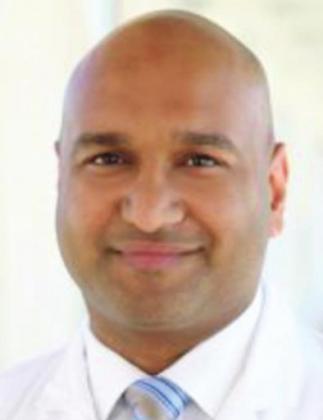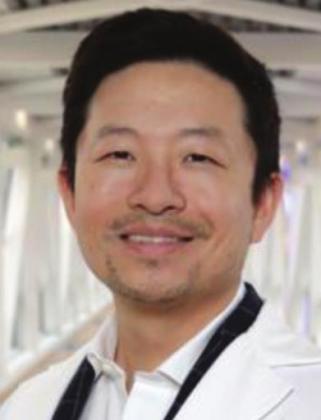IN THE REALM OF SPINAL SURGERY, optimal outcomes depend on highly precise placement of surgical instrumentation and hardware. An exceptional degree of expertise and training on the neurosurgeon’s part is essential to achieving the desired results, but, being human, even the most skilled surgeon has limitations.
To help maximize precision and patient safety during spinal-surgery procedures, the Mercy Health – Neuroscience Institute at St. Vincent Medical Center is among the first institutions in our region to adopt the Mazor X Stealth™ Edition Robotic Guidance Platform.
As a Level 1 Trauma Center, Level 2 Pediatric Trauma Center, and Comprehensive Stroke Center, the Mercy Health – Neuroscience Institute treats a wide range of neurological injuries and conditions, including (but not limited to) complex head and spinal trauma, complicated brain and spine tumors, aneurysms and brain bleeds, bulging and herniated discs, sciatica, and back pain of various forms. Acquiring the Mazor X system is just one more reflection of Mercy Health’s commitment to providing the most advanced treatment options for the patients in their care.
According to neurosurgeon Zubair Ahammad, DO, Chairman of the Department of Neurosurgery at Mercy Health – St. Vincent Medical Center, the Mazor X combines preoperative planning tools and analytics with intraoperative guidance and is most commonly used to aid in the placement of screws, rods, and other hardware in patients with trauma, herniated discs, tumor, or other conditions that require fixation of the spine.
He explains, “The Mazor X is essentially a robotic arm tied to computer software. Before surgery, the patient undergoes a CAT scan, and that image is then loaded into the computer and matched to the patient’s anatomy in real time. Using this combined imaging, which functions a lot like GPS tracking, we can localize exactly where we are in space, and the robotic arm provides perfect guidance to the site where we need to place screws or other hardware.”
Compared to conventional surgery, the minimally invasive approach with the Mazor X involves smaller incisions, causes less bleeding and pain, has a lower risk of complications, and requires a shorter recovery time. As a result, patient outcomes are superior, the safety profile is significantly better, and surgical efficiency is much greater because multiple pieces of fixating hardware can be placed accurately in a much shorter span of time.
Though the Mazor X augments the surgeon’s skill and significantly increases the precision of hardware placement, it’s important to understand that the system is not autonomous. “The Mazor X does not replace the surgeon’s judgment,” Dr. Ahammad emphasizes. “In fact, the surgeon maintains the full ability to control or override the robot. Think of the robotic system as an added measure of protection on top of the expertise, training, and care of the surgeon.”
Sean Xin, DO, also a neurosurgeon with the Mercy Health – Neuroscience Institute, adds that the Mazor X has a robotic arm somewhat similar to the robotic systems used on vehicle manufacturing assembly lines. “But it differs in that the GPS is completely individualized to patient anatomy, which varies from one person to the next—for example, one patient may have a large vertebra here or a twisted vertebra there. If you don’t account for those anatomical differences, you can end up putting a screw in the wrong place or at the wrong depth, potentially injuring a blood vessel, nerve, or even the spinal cord. With the Mazor X, the original CT of the patient’s anatomy is matched to his or her actual body on the table, allowing the software to determine the best placement for screws based on the most current data.”
Dr. Xin defines a good candidate for the Mazor X as anyone having spine surgery that requires the placement of fixation devices, such as pedicle screws, which are commonly used for procedures such as repairing broken bones or spinal fusion. “In any case that requires fixation of the spine, the robot will help us place the screws as perfectly as possible,” he states.
In general, the idea of spine surgery evokes a wide range of opinions in people, likely because, as Dr. Xin notes, the results can be equivocal—sometimes good, sometimes of dubious benefit. However, he explains, “When a spine operation is done for the right diagnosis and the right patient, the outcome can be lifechanging, getting people back to their normal lives, their jobs, and their families faster. That’s what we’re all about here.”



